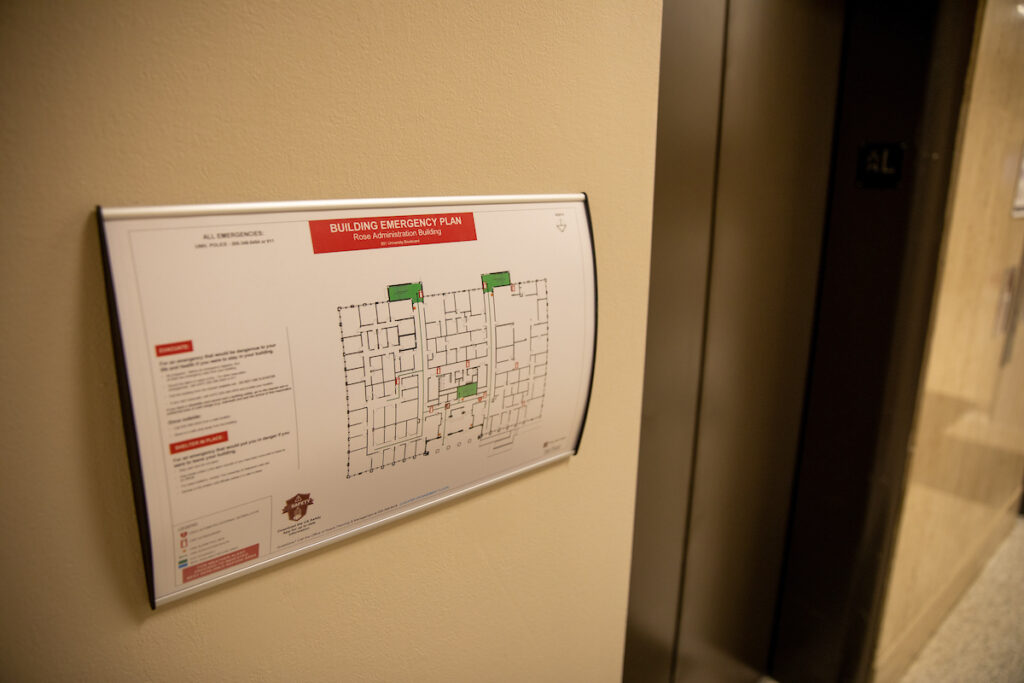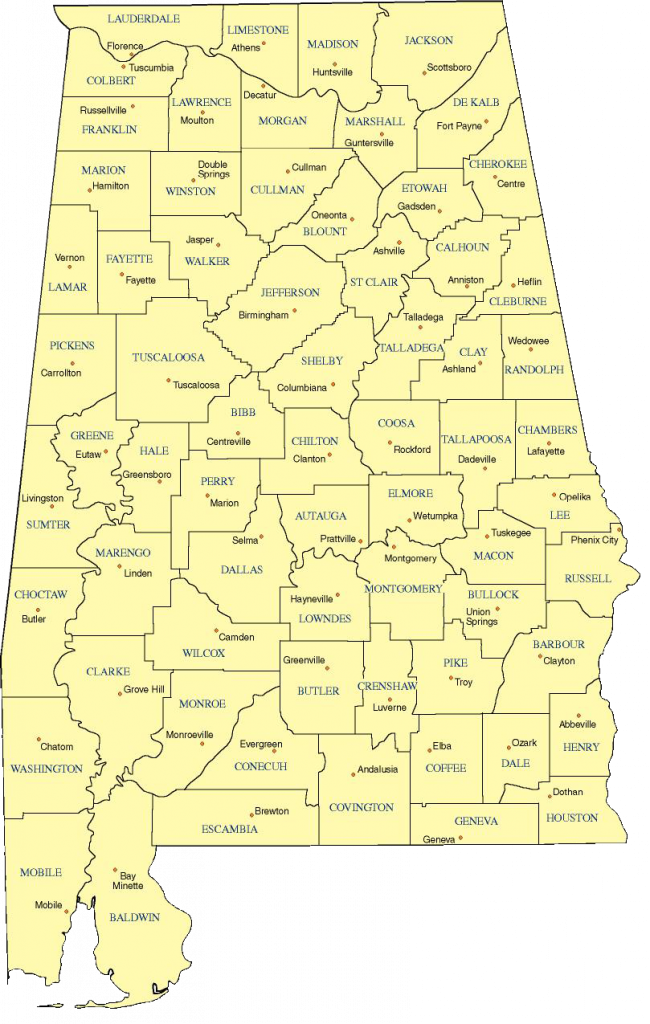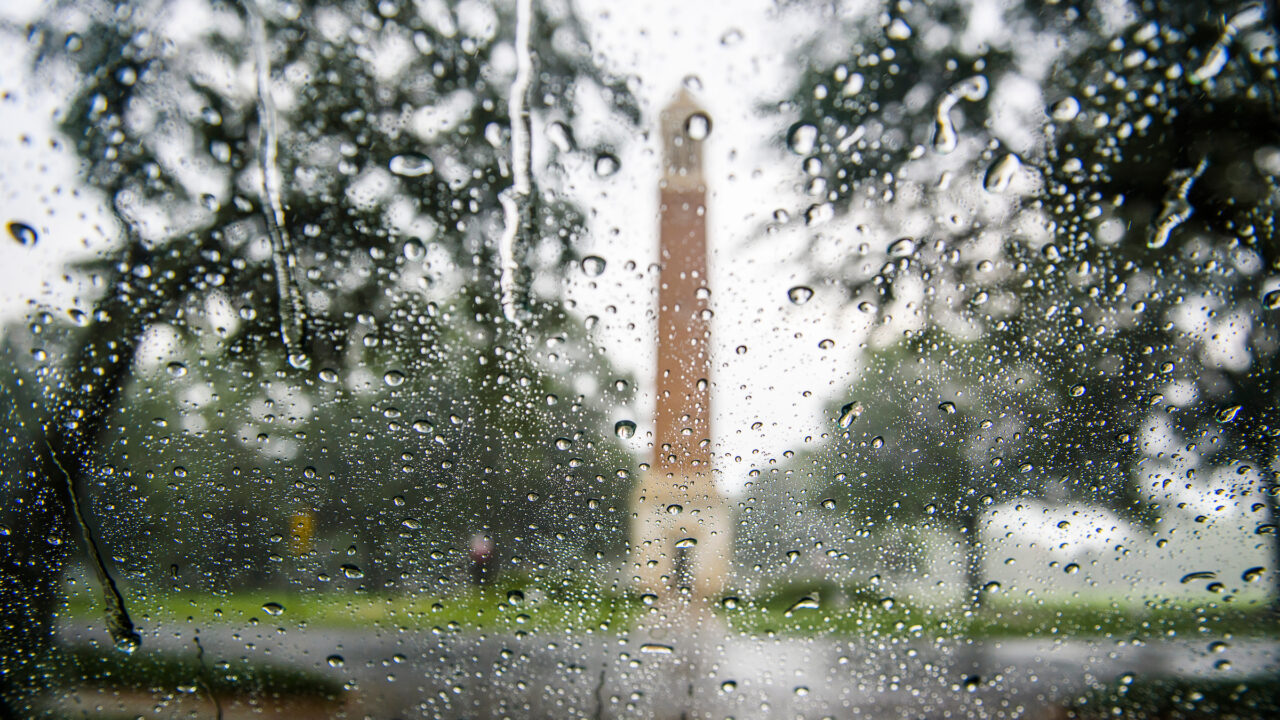Severe Weather Awareness Week in Alabama is Feb. 5-9. Throughout the week, the University will share information that you can use to help you stay safe when severe weather strikes.
Severe weather, such as severe thunderstorms with damaging winds, tornadoes, and floods occur regularly in Alabama, especially in the spring between March and May, and in the fall between November and mid-December. According to the National Weather Service, 70 tornadoes touched down in Alabama in 2023, killing nine people and injuring more than 25.
Here are some tips you can use to make sure you are prepared for severe weather when it strikes.
1. Make a plan.
The time to plan for severe weather is when the sun is shining and the skies are blue.
Making a personal emergency plan does not have to be complicated. Start by assessing your situation. Think about your daily routine. What routes do you take to class or the office? Which buildings do you use on campus?
After that, determine where the nearest campus storm shelter is located, and what route you would take to get there. UA opens all storm shelters and Best Available Refuge Areas, or BARAs when the National Weather Service issues a Tornado Watch for Tuscaloosa County.

In the event you can’t make it to a storm shelter during a severe weather event, a BARA has been identified for almost every building on campus. Simply look at the Building Emergency Plan located near exits or elevators to find the BARA for the building you’re in.
#DYK: You can use the UA Safety app to get directions from your current location to the nearest campus storm shelter or BARA.
2. Know where you live.
The best way you can be prepared for severe is to be able to pinpoint where you live on a map.

Since storms usually approach Tuscaloosa from the west or southwest, it’s a good idea to know the counties that are in those directions. They include Pickens, Greene, Hale and Sumter Counties. If a severe weather warning is issued for any of those counties, you should pay attention in case the storm moves toward Tuscaloosa.
#DYK: The National Weather Service provides a story map that you can use to learn more about Tuscaloosa County and see the tracks of past storms.
3. Have multiple ways to receive information.
The UA Safety app is a great way to get information about the weather. In addition to a seven-day forecast, the app also provides weather alerts for Tuscaloosa County. In the case of a Severe Thunderstorm Warning, Tornado Watch or Tornado Warning, UA will send out a UA Alert, which will also display in the app.
Watch How the UA Safety App Works
In addition, severe weather information is also broadcast on 92.5 FM UA Info Radio, and posted on the @UA_Safety X, formerly known as Twitter, and Instagram accounts.
Purchasing a NOAA Weather Radio for your home or office is also a good way to receive severe weather information. Many of these radios can be programmed to provide information for only the county or counties you want to be alerted to.
#DYK: Severe weather can happen at night. When it does, you need to make sure you have a device, like a NOAA Weather Radio, that will awaken you. It could save your life.
4. Build a kit.
If a severe storm hits Tuscaloosa, you may lose electricity for hours or even days. While less likely, if the damage is severe, you may also lose water service. To be prepared, you should build an emergency supply kit with essentials like bottled water, non-perishable food items, a flashlight with batteries, travel-size personal hygiene items and first aid supplies.
You can purchase certain severe weather preparedness items tax-free from Friday, Feb. 23, through Sunday, Feb. 25. Check out a full list of covered items on the Alabama Department of Revenue’s website.
Big Al is ready. Are you?
Safety Reminder: UA Alert System Test
Weather permitting, the University will test its emergency notification systems, including UA Alerts, the public address system and digital signage Wednesday, Feb. 7, at 11:55 a.m.
